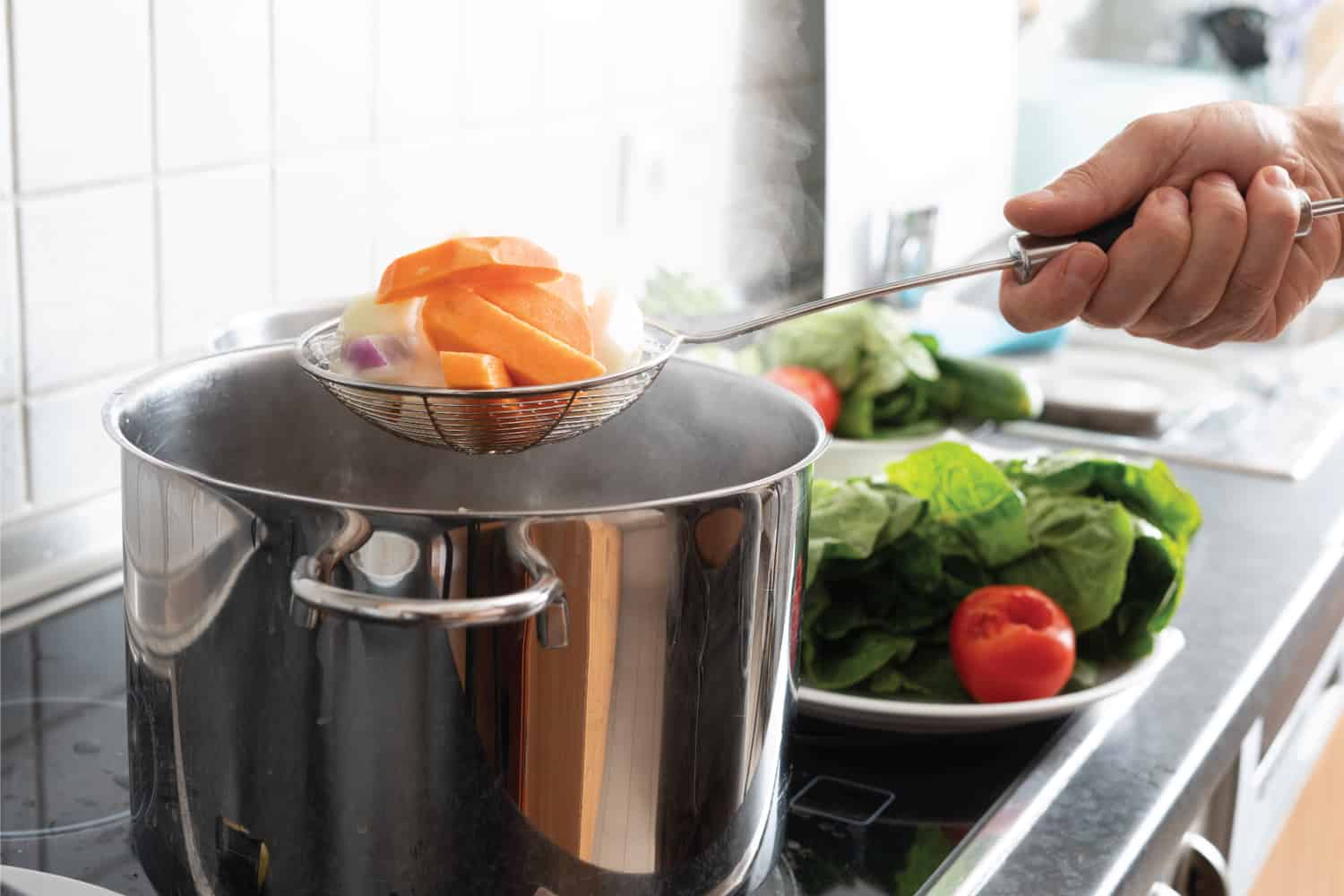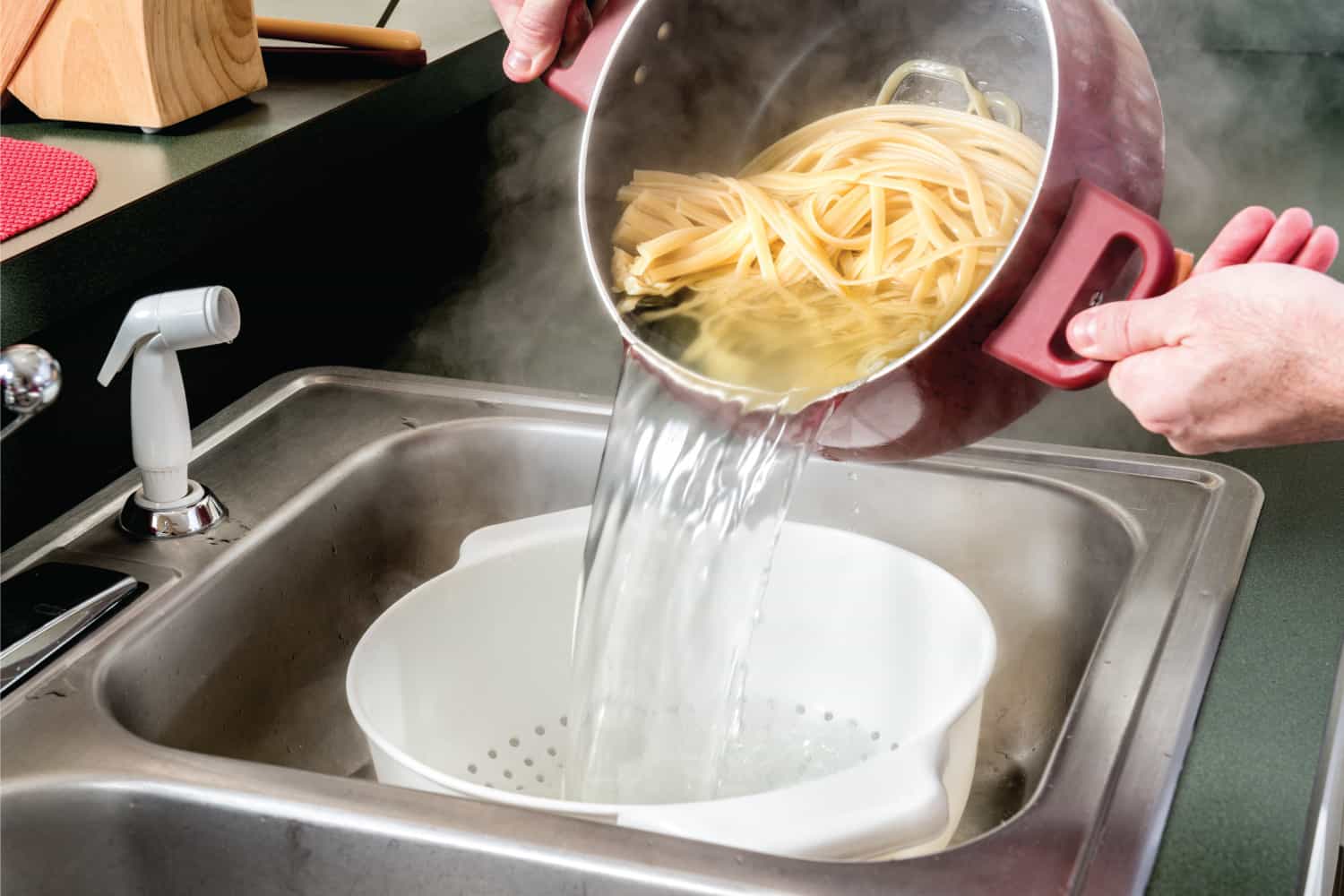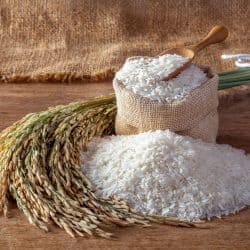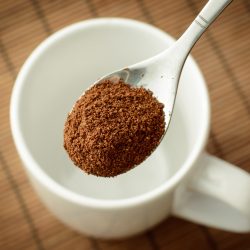What do you do if you are boiling something for dinner and realize you need to remove the water without a strainer? Maybe you are staying at a rental home or apartment while traveling, and they don't have a colander in the kitchen. Maybe you are at home, but the only strainer you have is dirty. You don't have time to clean it first, or the dish will be overcooked. We've found several ways you can strain your food without using a strainer or colander.
If you don't have a strainer, there are a few ways to strain the water from your pot without losing any food.
- Tongs
- Slotted Spoon
- Lid
- Cheesecloth
- Coffee Filters
- Bandana
- Pantyhose
- Fine Mesh Bag
Maybe you have some of these in your kitchen or closet but don't know how to utilize them to strain your food. What you use might depend on what you are cooking and the amount of food you need to strain at a time. Keep reading this post to determine how you can use these things to strain your food without a strainer.
![Strawberries Washing in Sink with water spraying in colander, How To Strain Without A Strainer [8 ways]](https://kitchenseer.com/wp-content/uploads/2020/12/Strawberries-Washing-in-Sink-with-water-spraying-in-colander-How-To-Strain-Without-A-Strainer-8-ways.png)
How to Strain Food Without Using A Strainer

Tongs
Tongs can be used in a couple of different ways to strain. This utensil works well for bigger noodles, like spaghetti. You can grab the food with the tongs and hold it above the pot until the water stops dripping or is dripping very slowly. Place the food into a serving dish and continue grabbing food with the tongs, allowing the water to drip off first, and placing the strained food into the serving dish.
You can attempt to slowly tilt the pot above the sink for the water to drain out. While you tilt the pot, you can use the tongs to hold the food in place, but you are more likely to drop some of your food into the sink.
Popco Silicone/Stainless Tongs Set
Click here to see more at Amazon.
Slotted Spoon
A slotted spoon already has holes to allow the water to strain out of your pot. You need to pour the water out slowly into the sink, tilting the pot just enough that food does not fall out. Then, hold the spoon against the edge of the post to stop the food from falling into the sink as you slowly tilt it further until all of the water drains out.
A slower way to strain is to scoop the food out with a slotted spoon, let the water drain, and put the strained food into a serving dish. The slotted spoon method works well for beans, small pasta noodles, and vegetables.
OXO Good Grips Stainless Steel Slotted Spoon
Click here to see more at Amazon.
Lid
You can use the lid to the pot to strain the water. Make sure you can hold the pot with one hand for up to 20 seconds without dropping it, or ask for someone to help you. You might need a potholder for a good grip on the lid, and be aware that steam will also be released from beneath the lid.
You will put the lid on the pot and hold the pot over the sink. Tip the pot to the side while holding the lid in place. You can move the lid, so a small gap allows water out. Continue tipping slowly and holding the lid in place until all of the water has drained out.
Universal Lid Tempered Glass with Silicone Rim
Click here to see more on Amazon.
Check out "Kitchen Utensils: The Ultimate List [Do You Know All 56!]" for more information about kitchen utensils that you can use to make your kitchen more functional.
Cheesecloth, Pantyhose, Or Mesh Bag
Cheesecloth or clean pantyhose can be used to strain. You can stretch the fabric around the top of the pot and tip the pot over the kitchen sink. Make sure you position your hands carefully and use a potholder, not to scald your hands. It takes longer for water to strain with this method, and you may ask a friend to squeeze both sides of the cheesecloth with two kitchen utensils. A fine mesh bag will work the same way.
100% Cotton Cheesecloth Ultra Fine
Click here to see more on Amazon.
Coffee Filters Or A Bandana
Coffee filters are small, so they will not work well for straining large amounts of food. They can be used to strain loose leaf tea or small amounts of food at a time. If you do use coffee filters for straining, you should stick with unbleached coffee filters. A clean bandana can be used the same way as a coffee filter, but make sure you use one that you don't plan to wear again. Your bandana is likely to get stained.
Coffee Filters 8-12 Cup
Click here to see more on Amazon.
Can You Use Paper Towels As A Strainer?
Paper towels can be used to strain, but they are much more likely to break when exposed to large amounts of hot water. If you are straining out the solids from liquid soup, then the paper towel will absorb a lot of your soup. Paper towels often contain formaldehyde and chlorine, which are byproducts you may wish to avoid in your dinner. Heavy-duty, bleach-free paper towels will be the best option to use if you have any in your kitchen.
What's The Difference Between A Colander And A Strainer?
A colander may also be known as a kitchen sieve. All colanders or sieves are a type of strainer. Not all strainers are colanders. Colanders are usually bowl-shaped and have small holes to allow water to strain through. Colanders work well for most food, as long as you don't have tiny herbs or rice that might fall through the slightly larger holes.
Stainless Steel Colander With Handles And Legs
Click here to see more at Amazon.
A fine mesh strainer has very tiny holes and will only allow liquids to pass through. A fine mesh strainer is not a colander. Read "11 Types of Kitchen Strainers [Inc. Colanders and Sieves]" for more information about different types of kitchen strainers.
Stainless Steel Fine Mesh Strainer Set
Click here to see more at Amazon.
Can You Use A Plastic Strainer For Pasta?

Any strainer that is large enough to fit your pasta will work, including a plastic strainer. One consideration is that hot water can leach chemicals from plastic. When straining pasta or other food, it usually involves hot water running through the strainer. For this reason, a stainless steel colander or strainer is the best option if it is available. Plastic strainers are for sale and deemed safe for kitchen use by the manufacturers, but that doesn't mean that enough testing has been done to ensure they are safe when exposed to hot water.
Heavy-duty Stainless Steel Colander
Click here to see more at Amazon.
In Closing
If you are just finishing up your meal and realize you don't have a strainer, don't worry. Many alternatives can help you drain the water from your pasta or remove the solids from your soup. You can carefully tilt the pot to drain the water while holding the food inside with a pot lid, slotted spoon, or tongs. You can pull out the food and strain each scoop by using tongs or a slotted spoon.
You can dump your food into cheesecloth or pantyhose. If you are saving the liquids, then hold the cheesecloth or pantyhose over a clean serving dish. If you are saving the solids, then you can strain over the kitchen sink. If your food is still holding a lot of water, then it might require some squeezing to get the rest of the water out. A friend can use two kitchen utensils to squeeze the food while you hold the cheesecloth above the sink or serving dish.









![Kitchen utensils in containers on table, Kitchen Utensils: The Ultimate List [Do You Know All 56?]](https://kitchenseer.com/wp-content/uploads/2020/05/Kitchen-utensils-in-containers-on-table-250x250.jpg)

![Man holding tong while mixing her Japanese style ramen dish, Types Of Kitchen Tongs [And What They're Used For]](https://kitchenseer.com/wp-content/uploads/2020/05/Man-holding-tong-while-mixing-her-japanese-style-ramen-dish-250x250.jpg)


